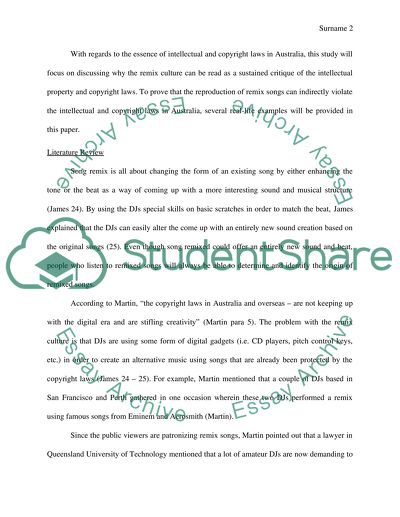Cite this document
(“Intellectual Property and Copyright Laws in Australia Essay”, n.d.)
Retrieved from https://studentshare.org/journalism-communication/1457551-remix-culture-can-be-read-as-a-sustained-critique
Retrieved from https://studentshare.org/journalism-communication/1457551-remix-culture-can-be-read-as-a-sustained-critique
(Intellectual Property and Copyright Laws in Australia Essay)
https://studentshare.org/journalism-communication/1457551-remix-culture-can-be-read-as-a-sustained-critique.
https://studentshare.org/journalism-communication/1457551-remix-culture-can-be-read-as-a-sustained-critique.
“Intellectual Property and Copyright Laws in Australia Essay”, n.d. https://studentshare.org/journalism-communication/1457551-remix-culture-can-be-read-as-a-sustained-critique.


